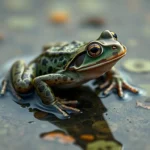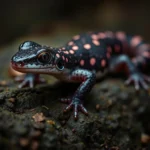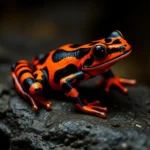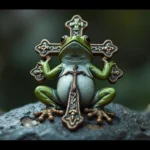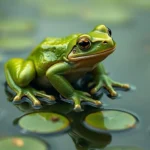The Mystical Symbolism of the Leopard Frog
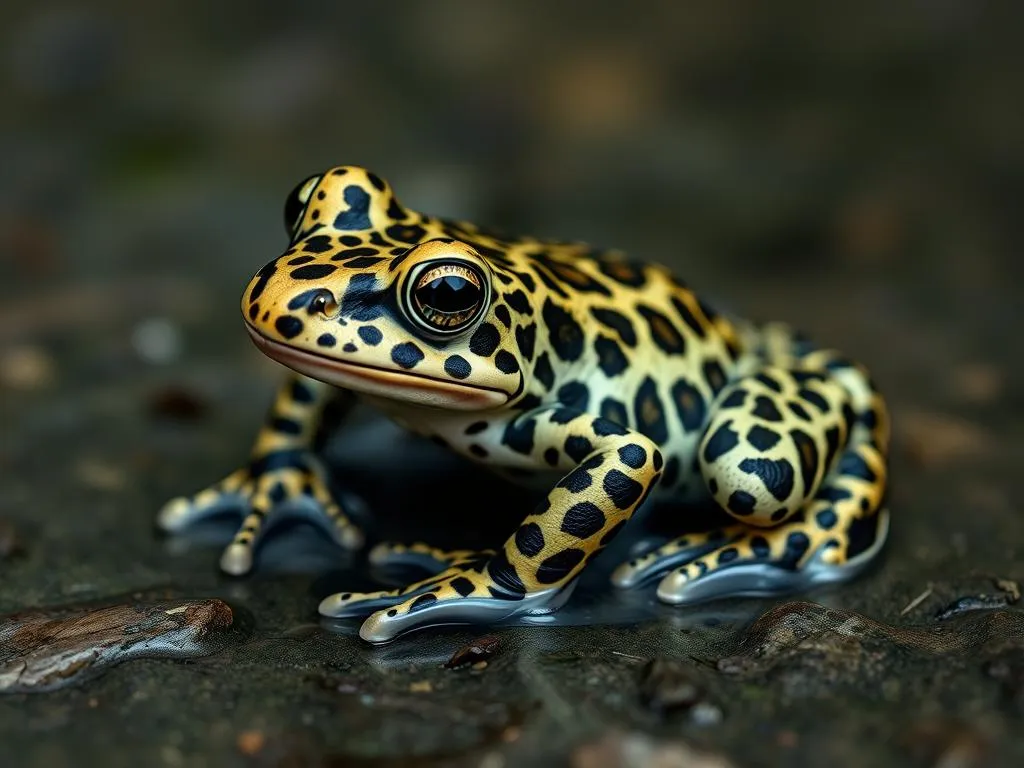
Disclaimer: Some images on this website are AI-generated artworks and may not accurately represent real animals.
The leopard frog, with its characteristic spots and vibrant coloration, holds a significant place in both nature and symbolism. Leopard frog symbolism and meaning extend beyond mere appearance; they resonate deeply with themes of transformation, adaptability, and emotional depth. This comprehensive exploration delves into the physical characteristics, habitat, dreams, and modern interpretations of the leopard frog, revealing its rich tapestry of meanings.
Understanding the Leopard Frog
Physical Characteristics
The leopard frog, scientifically known as Lithobates pipiens, is a striking amphibian easily recognizable by its appearance. Below is a brief overview of its key physical traits:
| Characteristic | Description |
|---|---|
| Coloration | Typically green, brown, or gray with dark spots |
| Size | Grows up to 4 to 5 inches in length |
| Skin Texture | Smooth skin with a moist surface |
| Eyes | Prominent, bulging eyes with a distinct golden hue |
| Limbs | Long, powerful hind limbs suited for jumping |
These distinctive features not only help the leopard frog thrive in its environment but also contribute to its symbolic representation of transformation and beauty.
Habitat and Behavior
Leopard frogs are commonly found in North America, inhabiting areas near water bodies such as ponds, marshes, and streams. They prefer shallow waters with abundant vegetation, which provides both shelter and hunting grounds.
Behaviorally, leopard frogs are known for their social structures. They often gather in groups during the breeding season, showcasing their distinctive calls. Their diet primarily consists of insects, small invertebrates, and occasionally, smaller frogs. The adaptability of the leopard frog allows it to thrive in various environments, making it a resilient species.
Cultural Significance
Throughout history, various cultures have attributed different meanings to the leopard frog. In some Native American traditions, the leopard frog symbolizes transformation, akin to the changes experienced in nature. Folklore often depicts frogs as messengers between the spirit world and humans, embodying the essence of adaptability and renewal.
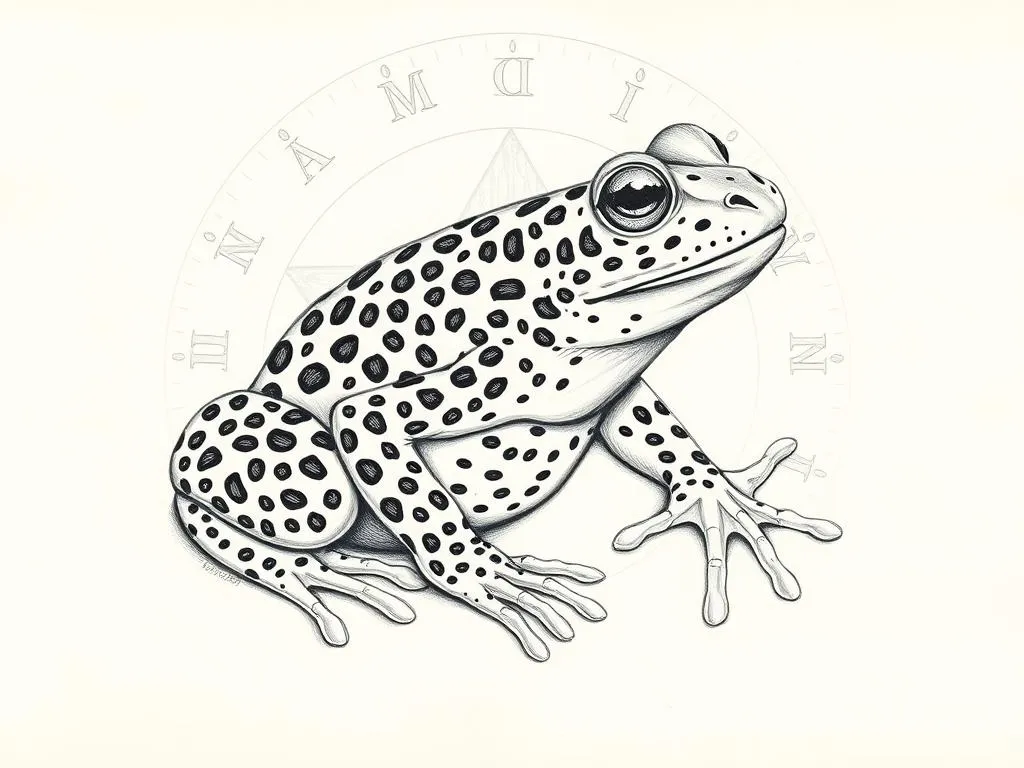
Symbolism & Spiritual Meaning
Transformation and Rebirth
The life cycle of the leopard frog—from egg to tadpole to adult—serves as a powerful metaphor for transformation and rebirth. This journey represents the potential for change and the beauty that can arise from it. Just as the frog undergoes significant changes throughout its life, individuals too can embrace personal growth and transformation.
The leopard frog’s ability to thrive in different environments further reinforces this theme, reminding us that change is not only possible but necessary for growth. The symbolism of transformation encourages individuals to embrace their own life transitions with grace and resilience.
Connection to Water
Water, the essential element of the leopard frog’s habitat, holds profound significance in many cultures. It symbolizes emotional depth, cleansing, and renewal. The presence of leopard frogs in aquatic environments signifies the importance of emotional health and the need for introspection.
In spiritual contexts, the leopard frog’s connection to water can also represent the flow of emotions and the importance of allowing oneself to feel and process these emotions. Just as the frog navigates its watery habitat, individuals are encouraged to navigate their emotional landscapes with courage and authenticity.
Adaptability and Resilience
Leopard frogs epitomize adaptability and resilience. Their ability to thrive in diverse habitats, from urban areas to pristine wetlands, symbolizes the importance of flexibility in the face of adversity. This adaptability serves as a reminder that resilience is often found in being open to change and willing to adjust to new circumstances.
The leopard frog’s survival instincts also reflect the necessity of remaining grounded while navigating life’s challenges. As this amphibian adapts to its environment, individuals can draw inspiration from its tenacity and resourcefulness.
Leopard Frog in Dreams
Common Themes
Dreams involving leopard frogs can carry a range of meanings, often tied to the themes of transformation and emotional exploration. Below are some common themes associated with leopard frogs in dreams:
| Dream Theme | Interpretation |
|---|---|
| Transformation | Indicates personal growth or upcoming changes |
| Emotional Release | Suggests the need to confront and process emotions |
| Adaptability | Encourages flexibility in dealing with life challenges |
The appearance of a leopard frog in dreams often acts as a guide, prompting the dreamer to reflect on their current life situation and the potential for growth.
Messages of Change
When a leopard frog appears in dreams, it can signify impending transitions or transformations. This may relate to personal relationships, career changes, or emotional breakthroughs. The dream may urge the individual to embrace these changes rather than resist them, highlighting the importance of embracing one’s journey.
Emotional Healing
Leopard frogs in dreams can also serve as catalysts for emotional healing. Their presence may encourage dreamers to release pent-up emotions or confront unresolved issues. This interpretation aligns with the leopard frog’s symbolism of water, emphasizing the need for emotional expression and release.
Modern Interpretations
Environmental Symbolism
In contemporary discussions, leopard frogs have become significant indicators of ecosystem health. As amphibians, they are sensitive to environmental changes, making them important symbols for ecological awareness. The decline of leopard frog populations can signal larger environmental issues, emphasizing the need for sustainability and conservation efforts.
This environmental symbolism reinforces the connection between the leopard frog and the themes of adaptability and resilience, as these traits are essential for both individuals and ecosystems facing change.
Cultural References
The leopard frog has made its mark in various forms of literature, art, and media. In children’s literature, it often appears as a character representing curiosity and adventure, encouraging young readers to explore the world around them. In art, the leopard frog’s vibrant appearance often symbolizes nature’s beauty and diversity.
These modern representations continue to highlight the leopard frog’s symbolism as a creature of transformation and resilience, inspiring individuals to seek personal growth and connection with nature.
Personal Totems
For many, the leopard frog serves as a spirit animal or personal totem. Embracing the leopard frog as a totem can provide guidance during times of change and uncertainty. This spiritual connection promotes qualities such as adaptability, emotional balance, and an appreciation for the beauty of transformation.
In contemporary spiritual practices, understanding the leopard frog’s symbolism can enhance one’s personal journey. It encourages individuals to embrace their unique path while drawing strength from the resilience of this remarkable amphibian.
Key Takeaways
Understanding the leopard frog symbolism and meaning can offer valuable insights into personal growth and spiritual development. Here are some key reflections:
- Transformation: The leopard frog’s life cycle symbolizes personal growth and the beauty of change.
- Emotional Depth: Its connection to water emphasizes the importance of emotional health and introspection.
- Adaptability: The frog’s resilience serves as a model for navigating life’s challenges and embracing flexibility.
- Environmental Health: The leopard frog highlights the significance of ecological awareness and sustainability.
- Spiritual Guidance: As a personal totem, the leopard frog can provide support during transitions and encourage emotional healing.
Conclusion
The enduring relevance of the leopard frog as a symbol in our lives is profound. Its rich symbolism and meaning encompass themes of transformation, adaptability, and emotional depth. By exploring personal connections with the leopard frog, individuals can gain insights into their own journeys of resilience and change.
As we navigate the complexities of life, the leopard frog serves as a reminder that transformation is not only possible but also essential. Embracing the lessons it offers can lead to profound personal growth, inviting us to leap into new experiences with courage and grace.
